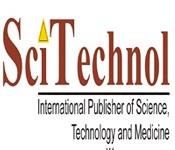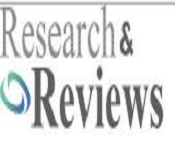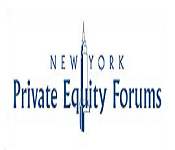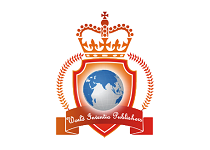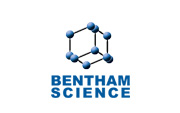Theme: Analytica Acta: Changing Paradigms, changing Analytica
Analytica Acta 2018
Conference Series LLC LTD invites all the participants from all over the world to attend “International Conference on Analytical and Bioanalytical Techniques” during October 31- November 01, 2018 in Columbus, Ohio, USA which presents talks and presentation from highly eminent persons and exhibition of Standard Companies.
Analytica Acta 2018 is a best platform to meet and share the knowledge with eminent persons related to academic and towards the industrial knowledge. Analytica Acta 2018 conference covers all the fields related to Analytical chemistry and bio analytical assay,organic chemistry,food chemistry. There will be many seminars, workshops and technical sessions take place which will catch the attention of the professionals to attend Analytica Acta 2018 conference and it would enormously enrich our knowledge in understanding the current requirements of the global pharmaceutical industry and academic area. The experts will get an excellent opportunity to give many presentations and lectures on different topic and will also present their case studies.
The main aim and theme of the conference to enlighten the innovations and current trends with Analytical chemistry and bio analytical assay. This conference brings together individuals who are interested in fields of Analytical chemistry, chromatography and approaching towards the conference gives best platform to explore the ideas and explore the issues concerned to relevant topic and generate solutions. As per the scientific research and analysis analytical market is growing on an average 0.4% annually. This report studies the global Analytical chemistry market over the forecast period of 2014 to 2018. North America is on the verge dominating the global analytical chemistry, followed by Europe and Asia. The North American market is likely to be driven by factors such as the increasing number of government investments in pharmaceutical, biotechnology, medical, and academic research studies that make use of Analytical techniques. On the other hand, Asia is expected to grow at the highest in coming years due to the presence of high-growth markets such as India and China, the improved funding scenario in this region, increasing number of conferences and exhibitions on Analytical techniques, and increased focus of the giant players in these countries.
Conference Series LLC LTD organizes 1000+Conferences Every Year across USA, Europe & Asia with support from 1000 more scientific societies and Publishes 900+Open access Journals which contains over 60000 eminent personalities, reputed scientists as editorial board members.
Why to Attend?
To discuss and relate the issues and achievements in the field of Analytical Chemistry Conference series LLC Ltd Conferences has taken the initiative to gather the world class experts both from academic and industry background in a common platform at its Chemistry conferences.
At our conference venue, there will also be oral/poster presentations by professors/ Asst.professors/research scholars and key notes presentations by key note speakers. Presentations will be peer-reviewed and awarded, also work will be published in respective supporting journals.
It will be a knowledge exchange from various eminent speakers and research scholars. It will address to the current scenario of analytical research which will help a research person continue his further research and achieve future endeavors.
Target Audience:
· Eminent personalities in the field of Analytical chemistry
· Analytical chemistry Students, Scientists
· Analytical chemistry Researchers
· Analytical chemistry Faculty
· Pharmacy Colleges and universities
· Pharmacy Associations and Societies
· Business Entrepreneurs
· Training Institutes
· Software developing companies
· Chemical Instrument Vendors
· Analytical instrument manufacturing companies
· Pharmacology
· Forensic Analysis
Details of Analytica Conferences 2018 in Columbus, Ohio, USA:
Conference Series LLC Ltd is organizing Chemistry Conferences in 2018 at Columbus, USA. We organize Chemistry Meetings in the fields related to Environmental Analytical Chemistry Analytical Chemistry and Engineering, Spectroscopy, Chromatography, Titration, High Performance Liquid Chromatography (HPLC), Mass spectrometry, NMR Spectroscopy, Electrophoresis, Electrochemical analysis, Thermal analysis, Green Analytical Chemistry, Forensic Analysis, Analytical Technique for Food analysis, Analytical Techniques for Clinical Chemistry, Analytical Technique for Separation, Radioanalytical Chemistry, Applied Crystallography.
|
Conference Name |
Place |
Date |
|
Columbus, USA |
October 31st – November 1st ,2018 |
Track 01: Analytical Chemistry and Engineering
Analytical chemistry is the component of chemistry most closely related to engineering and involves in the development of new instrumentation and new technology used to separate, identify, and quantify matter. It is concerned with the practical applications of chemistry, has seen increased interest in the emergence of the mega-interdisciplinary areas of nanotechnology and systems biology. It consists of classical, wet chemical methods and modern, instrumental methods. Classical qualitative methods use separation methods such as precipitation, extraction, and distillation. Instrumental methods may be used to separate samples using chromatography, electrophoresis or field flow fractionation.
Track 02: Spectroscopy
Spectroscopy is that the study of the interaction between matter and radiation. Traditionally, spectrographic analysis originated through the study of light spread in line with its wavelength, by a prism. Later the thought was expanded greatly to incorporate any interaction with radioactive energy as a perform of its wavelength or frequency. Spectroscopic data is commonly described by a spectrum, a plot of the response of interest as a perform of wavelength or frequency.
Track 03: Chromatography
Chromatography is that the collective term for a group of laboratory techniques for the separation of mixtures. The mixture is dissolved in an exceedingly fluid referred to as the mobile part, that carries it through a structure holding another material referred to as the stationary part. Gas chromatography, additionally generally called gas-liquid chromatography, may be a separation technique during which the mobile part may be a gas. Reversed-phase chromatography is any liquid chromatography procedure during which the mobile part is considerably a lot of polar than the stationary part. It’s therefore named as a result of in normal-phase liquid natural action; the mobile part is considerably less polar than the stationary part. Hydrophobic molecules within the mobile part tend to adsorb to the comparatively hydrophobic molecules.
Track 04: Titration
Titration also known as titrimetry is a common laboratory method of quantitative chemical analysis that is used to determine the unknown concentration of an identified analyte. Since volume measurements play a key role in titration, it is also known as volumetric analysis. A reagent, called the titrant or titrator is prepared as a standard solution. A known concentration and volume of titrant reacts with a solution of analyte or titrand to determine concentration. The volume of titrant reacted is called titration volume.
Track 05: High Performance Liquid Chromatography (HPLC)
It is different and another type of column chromatography that pumps a sample mixture or analyte in a solvent at high pressure through a column with chromatographic packing material. HPLC has the ability to analyze, and separate compounds that would be present in any sample that can be dissolved in a liquid in trace concentrations. Because of this advantage, HPLC is used in a variety of industrial and scientific applications, such as pharmaceutical industry, environmental, forensic science, and chemicals. High Performance Liquid Chromatography has brought lot of advantages in the department of food analysis and also in the analysis of various fat soluble vitamins. HPLC is also used in DNA fingerprinting and bioinformatics
Track 06: Mass spectrometry
Mass spectrometry is an analytical technique that ionizes chemical species and kinds the ions supported their mass to charge quantitative relation. In common terms, a spectrum measures the masses of sample. Mass spectrometry is employed in many alternative fields and is applied to pure samples further as complicated mixtures. A tandem mass spectrometry is one capable of multiple rounds of mass spectrographic analysis, sometimes separated by some type of molecule fragmentation. Tandem mass spectrometer allows a spread of experimental sequences. several industrial mass spectrometers are designed to expedite the execution of such routine sequences as selected reaction Monitoring and precursor particle scanning.
Track 07: NMR Spectroscopy
Nuclear Magnetic Resonance (NMR) spectroscopy is an analytical chemistry technique used in quality control and research for determining the content and purity of a sample as well as its molecular structure. The principle behind NMR is that many nuclei have spin and all nuclei are electrically charged. If an external magnetic field is applied, an energy transfer is possible between the base energy to a higher energy level. The energy transfer takes place at a wavelength that corresponds to radio frequencies and when the spin returns to its base level, energy is emitted at the same frequency. The signal that matches this transfer is measured in many ways and processed in order to yield an NMR spectrum for the nucleus concerned. Most frequently; NMR spectroscopy is used by chemists and biochemists to investigate the properties of organic molecules, although it is applicable to any kind of sample that contains nuclei possessing spin.
Track 08: Electrophoresis
Electrophoresis is that the motion of form relative to a fluid beneath the influence of a spatially uniform field. It is the applying of constant field caused clay particles spread in water to migrate. It’s the premise for variety of analytical techniques utilized in chemistry for separating molecules by size, charge, or binding affinity. Polyacrylamide gel electrophoresis encompasses a clearer resolution than agarose and is additional appropriate for quantitative analysis. During this technique DNA foot-printing will determine however proteins bind to DNA. Affinity electrophoresis may be a general name for several analytical strategies utilized in organic chemistry and biotechnology.
Track 09: Electrochemical analysis
Electrochemical analytical methods measure the potential associated current in a chemistry cell containing the analyte. These ways are often classified consistent with those aspects of the cell are controlled and is measured. Voltammetry information about an analyte is obtained by measuring the current as the potential is varied processes.
Track 10: Thermal analysis
Thermal analysis is a branch of materials science where the properties of materials are studied as they change with temperature. Several methods are commonly used – these are distinguished from one another by the property which is measured.
Track11: Green Analytical Chemistry
Green analytical chemistry analytical procedures that generate less hazardous waste and that are safer to use and more benign to the environment. It is for developing new analytical methodologies and modifying an old method to incorporate procedures that either use less hazardous chemicals or use lesser amounts of hazardous chemicals.
Track12: Forensic Analysis
A scope of analytical tools and systems are utilized in the revelation of confirmation or examination of materials significant to the examination of wrongdoings or to other legitimate procedures. Such measurable confirmation may appear as organic examples, saved follow materials and buildups or contaminant, fake or lay materials. Analytical instrumentation utilized as a part of measurable reviews has developed to end up noticeably always touchy and give novel data and expanding levels of detail, opening up new potential outcomes in lawful examinations. Morphologically directed Raman Spectroscopy (MDRS) consolidates robotized molecule imaging and Raman spectroscopy in one instrument.
Track 13: Analytical Technique for Food analysis
In this track of ‘Analytica Act’ will be discussed about Chemical Analysis of Food: Techniques and Applications reviews new technology and challenges in food analysis from multiple perspectives: a review of novel technologies being used in food analysis (solid phase extraction, HPLC, enzymatic method), an in-depth analysis of several specific approaches.Food analysis is the discipline dealing with the development, application and study of analytical procedures for the properties of foods.
Track 14: Analytical Techniques for Clinical Chemistry
Analytical techniques play an important role in clinical chemistry. Analytical Techniques for Clinical Chemistry deals with the legal and regulatory framework governing clinical lab analysis. It also explains the latest progress in instrumentation and applications in such fields as biomonitoring, diagnostics, food quality, biomarkers, pharmaceuticals, and forensics.
Track 15: Analytical Techniques for Separation Techniques
Separation techniques is a method to achieve any phenomenon that converts a mixture of chemical substance into two or more distinct product mixtures, which may be referred to as mixture minimum of one amongst that is enriched in one or additional of the mixture's constituents. In some cases, a separation might absolutely divide the mixture into its pure constituents. Separations variations in chemical properties or physical properties like size, shape, mass, density, or chemical affinity, between the constituents of a mixture.
Track 16: Radioanalytical Chemistry
Radioanalytical chemistry is used for analysis of a sample for their radionuclide content. The Radioanalytical Chemistry Capability (RACC) combines radioanalytical chemistry and medium level gamma-ray spectrometry. This capability has expertise in the measurement of natural and anthropogenic radionuclides, and analysis of environmental samples from pristine, human impacted and contaminated environments.
Track 17: Applied Crystallography
Crystallography is the science that examines crystals, which can be found everywhere in nature from salt to snowflakes to gemstones. Crystallographers use the properties and inner structures of crystals to determine the arrangement of atoms and generate knowledge that is used by chemists, physicists, biologists, and others. Applied Crystallography is a crystallographic method that is used to study the crystalline and non-crystalline matter with neutrons, X-rays and electrons, their application in condensed matter research, materials science and the life sciences, and their use in identifying phase transformations and structural changes of defects, structure-property relationships, interfaces, and surfaces.
Track 18. Analytical Technique for Pharmaceutical industries
This Term of Pharmaceutical Analytical Chemistry is an interdisciplinary branch between Pharmacy and Analytical chemistry and covers all the fields of Pharmaceutical Analytical Chemistry. An analytical technique could also be a method that's accustomed ensures the concentration of a matter or substance. Future analytical techniques in DNA analysis ought to be important to induce absolute leads to medication. The foremost common techniques utilized in analytical chemistry unit space are follows: titrimetric, Electrochemistry ways during which, still as potentiometer and voltammetry; spectroscopy, supported the differential interaction of the analyte. Forensic DNA analysis, testing is seriously hampered by a growing backlog of compound samples by exploitation
Track 19: Analytical Techniques in Pharmacogenomics
An analytical technique could also be a method that's accustomed ensures the concentration of a matter or substance. Future analytical techniques in DNA analysis ought to be important to induce absolute leads to medication The foremost common techniques utilized in analytical chemistry unit space are follows: titrimetric, Electrochemistry ways during which, still as potentiometry and voltammetry; spectroscopy, supported the differential interaction of the analyte. Forensic DNA analysis, testing is seriously hampered by a growing backlog of compound samples by exploitation HPLC.
Track 20: Regulatory Issues and Bio safety Challenges in Bioanalysis
Liquid chromatography-mass spectrum analysis may be a key analytical technique that mixes the physical separation capabilities of liquid action with the mass spectrometry analysis capabilities of spectrometry analysis.LC-MS system is employed for fast and mass directed purification of natural-products extracts and new molecular entities necessary to food, pharmaceutical, agrochemical and different industries.
Track 21. Biosensor
In this term of ‘Analytical and bioanalytical congress ‘will be discussed about biosensor, biosensor is an analytical device, used for the find of an analyte, that combines a biological component with a physicochemical detector. The sensitive biological element (enzymes) is a biologically derived material or biomimetic component that interacts (binds or recognizes) with the analyte under study. The biologically sensitive elements can also be created by biological engineering.
Track 22: Bio analytical methodology
Bioanalytical Chemistry may be a sub-division of Analytical Chemistry that covers the measuring of medicine, Proteins and de oxy ribonucleic acid in unnatural samples or concentrations. In the Earlier times, Bioanalysis was thought to be used for the measuring of little drug molecules, How ever since the outburst of biopharmaceuticals has started. Bioanalytical Techniques and validation are utilized in the measuring and analysis of huge molecule medicine. Bioanalytical Chemistry advancement chiefly started by the usage of the recently developed subtle strategies that include: combined techniques like Chromatography, LC-MS, Spectroscopy and ultrafast spectroscopy, GC-MS and natural process strategies like HPLC.
Track 23: Analytical Methodology
The Analytical methodology could be a generic method combining the facility of the scientific technique with the utilization of formal method to unravel any kind of drawback. Analytical method has some techniques which will be very useful in analysis of drugs and their molecules. These are as follows: forensic techniques, Electro analytical strategies. Fluorescence techniques and forensic analytical techniques are useful in detection of unknown things like rhetorical proof. Bioanalytical method validation and development is an efficient technique method development involves and optimizing numerous technique parameters to satisfy the expressed goals of the strategy and procedure.
Track 24: Application of Analytical and Bioanalytical
In the third track of ‘Analytica Act’ will be discussed about the Application of Analytical and Bioanalytical technique concerned with all developed and advances techniques. Bioanalysis may be a sub-discipline of analytical chemistry covering the quantitative activity of xenobiotic (drugs and their metabolites, and biological molecules in unnatural locations or concentrations) and biotic (macro and micro molecules, proteins, DNA, giant molecule medicine, metabolites) in biological systems.
Track 25: Method development and validation
Analytical method development and validation are the continuous and inter-dependent task associated with the research and development, quality control and quality assurance departments. Analytical procedures play a critical role in equivalence and risk assessment, management. It helps in establishment of product-specific acceptance criteria and stability of results. Bioanalytical method validation should demonstrate that the analytical procedure is suitable for its intended purpose. Design of experiment is a powerful tool for the method characterization and validation.
Track 26: Advances in Chromatography and Mass Spectrometry
Chromatography and mass qualitative analysis is employed for analysis of organic compounds. Electro spray ionization (ESI) could be a technique employed in mass spectroscopic analysis. As compare to chromatography and mass spectrometry .HPLC is more flexible informative and trusted by the industry people. Recent advances in sample preparation techniques to beat difficulties encountered throughout measuring of little molecules from bio fluids mistreatment LC-MS. For Measuring, observation and protective your important Investments analytical chemistry instruments are used. Global Bioanalysis seminars are conducted and those specifically applied for chromatography assays, ligand binding assays to know more advances
Track 27: New analytical Instrumentation and Equipment
NMR analysis is used in separation of complex l and natural samples. Recent advances in mass chemical analysis area unit facultative improved analysis of endogenous metabolites. Here we have a tendency to discuss many problems relevant to developing High-Performance Liquid Chromatography, electro spray ionization, mass chemical analysis ways for targeted metabolomics (i.e., menstruation of dozens to many specific metabolites).Lab-on-a-chip devices area unit a set of MEMS instruments and infrequently indicated by "Micro Total Analysis Systems".
Track 28: Diagnostic assays and test kits
This session of Diagnostic assays and test kits. Immune chromatographic Assays in addition cited as Lateral Flow Tests or just Strip Tests unit of measurement immunoassays performed on an easy to use strip format. Amount of your real time quantitative PCR is incredibly correct and fewer effortful than current quantitative PCR ways in which. Needs relatively bit of sample, adequate level of sensitivity, easy manufacture in large scale, Stability of the last word product at temperature (shelf life), β-D-Glucan as a Diagnostics Adjunct for Invasive Fungal Infections: Validation and drug development, and Performance in Patients with Acute Myelogenous blood cancer.
Societies/Industries/Universities Associated with Analytical and Bio analytical techniques:-
- Chromatography Association of India (CSI)
- American Chemical Society
- Society of Analytical Psychology
- Association of Separation Scientists and Technologists
- American Organization of Analytical Chemists International (AOAC)
- American Society for Mass Spectrometry
- An International Separation Science Society
- National university of Singapore
- National Institute of Education
- Singapore university of Technology
- Singapore National Institute of Chemistry
- Singapore Chemical Industry Council
- Mitsui Chemicals Asia Pacific Ltd
- Merck Pvt Ltd
- Petrochemical Corporation of Singapore
Major Advanced Analytical and Bioanalytical Associations Around the Globe
- Chromatography Association of India (CSI)
- American Chemical Society
- Society of Analytical Psychology
- Association of Separation Scientists and Technologists
- American Organization of Analytical Chemists International (AOAC)
- American Society for Mass Spectrometry
- An International Separation Science Society
- Association of Analytical Communities (AOAC) International
- Association of Separation Scientists and Technologists
- Australian and New Zealand Society for Mass Spectrometry
- Austrian Society for Analytical Chemistry
- California Separation Science Society (CaSSS)
- Canadian Society for Analytical Sciences
- Chinese American Chromatography Association (CACA)
- Chromatographic Society of India (CSI)
- Cooperation on International Traceability in Analytical Chemistry (CITAC)
- International Council of Chemical Associations
- Mendeleev Russian Chemical Society
- Royal Australian Chemical Institute
- Royal Society of Chemistry
- Society for Applied Spectroscopy
- Society for Chromatographic Sciences (SCS, Japan)
- South African Chromatography Society (ChromSA)
- The International Association for the Advancement of High Performance Thin Layer Chromatography (HPTLC Association)
- The Japan Society for Analytical Chemistry (JSAC)
International Conference on Analytical and Bio analytical Techniques which is goind to held during Ocotber 31- November 01, 2018, at Columbus, Ohio, USA. Gathering all the renownes Speakers, Scientists, Academicians, Students, and Business Tycoons at a Common Scientifi Platform to discuss, Develope, and Discover the advancements in the arena of Analytical Chemistry and bio anlytical Research.
Theme : Analytica Acta 2018- Chanign Paradigms, Changing Analytica.
Analytical Chemistry is a subject deals with the Chemistry part and also the main stream subject in the pharmaceutical science. As the Analytical and bio analytical techniques plays a predominant role present and in the future generations.
The survey by the Global Industry Analysts announced the release of a comprehensive global report on chromatography systems market. The global market for chromatography systems, analytical and bio analytical techniques for the study and research is forecast to reach $1.4 billion by the year 2015.The global market of Analytical chemistry is forecasted to be around $3.4 billion by 2019, growing at an approximate CAGR of 13% in the forecasted years. America has the largest market growth followed by Asia-Pacific and Europe. The Analytical Chemistry and bio analytical techniques, biotechnology market is poised to grow at a CAGR of around 14% over the next decade to reach approximately $9 billion by 2025..
The U.S. market for fluorochemical and polymers is expected to increase from 2.1 billion pounds in 2016 to nearly 2.4 billion pounds in 2021 at a compound annual growth rate (CAGR) of 2.3% for 2016-2021. The global market for Bioanalytical techniques and the research based have reached $58.5 billion in 2015. The market should reach $60.2 billion in 2016 and $78.7 billion by 2021, growing at a compound annual growth rate (CAGR) of 5.5% from 2016 to 2021, the global specialty chemicals market for water treatment should reach $38.2 billion by 2021 from $28.5 billion in 2016 at a compound annual growth rate (CAGR) of 6.1%, from 2016 to 2021.
This research examines the challenges faced by market participants; Market Size is roughly $ 618 billion a year. With a workforce of 1.7 million and sales of $564 billion (2013). Traditionally, the chemical sector was severely affected by the 2008-09 global recession, According to the data; the sector remains 7% below pre-crisis levels. World chemicals sales in 2012 are valued at €3,127 billion; total sales for the region were €673 billion in 2011–21.5 per cent of world chemicals sales in value terms. Eleven of the top 30 major chemicals producing countries sales are of €582 billion. This figure accounts for 20.9 per cent share of chemicals sales in the top 30 chemicals producing countries and 18.6 per cent in the world. Developments during the last 20 years from 1992 to 2012 indicate that was in a much stronger position than today, during the period from 2002 to 2012, chemicals sales increased on average by 3 per cent per annum. By 2012, Chemicals sales and consumption in the Union registered little growth during the period from 2007 to 2012, while chemicals consumption increased by 0.7 per cent and sales by 1.3 per cent. During the 11-year period from 2001 to 2012, the chemical industry had an average production growth rate of 0.6 per cent, a rate slightly higher than the 0.4 per cent for all of the manufacturing industry. Growth in chemicals production in 2010 was spectacular, reaching 10.6 per cent year on year. The overall market analysis shows that the Research and trends in the modern analytical and bio analytical experimentation on the verge and increases the maximum heights in the contemporary scenario
Conference Highlights
- Chromatography
- Electrophoresis
- Mass spectrometry
- Electrochemical analysis
- Spectroscopy
- Analytical Techniques for Clinical Chemistry
- Analytical Technique for Separation
- Bio analytical methodology
- Analytical Methodology
- Analytical Techniques in Pharmacogenomics
- Advances in Chromatography and Mass Spectrometry
- New analytical Instrumentation and Equipment
- Regulatory Issues and Bio safety Challenges in Bioanalysis
- High Performance Liquid Chromatography (HPLC)
- Analytical Chemistry and Engineering
- Forensic Analysis
- Biosensor
- Method development and validation
- Analytical Technique for Food analysis
- Diagnostic assays and test kits
- Analytical Technique for Pharmaceutical and Industries
- Green Analytical Chemistry
- NMR Spectroscopy
- Applied Crystallography
- Radioanalytical Chemistry
- Thermal analysis
- Application of Analytical and Bioanalytical
- Titration
- Environmental Analytical Chemistry
To share your views and research, please click here to register for the Conference.
To Collaborate Scientific Professionals around the World
| Conference Date | November 01-02,2018 | ||
| Sponsors & Exhibitors |
|
||
| Speaker Opportunity Closed | Day 1 | ||
| Poster Opportunity Closed | Click Here to View | ||
Useful Links
Special Issues
All accepted abstracts will be published in respective Our International Journals.
- Journal of Chromatography & Separation Techniques
- Journal of Analytical & Bioanalytical Techniques
- Journal of Bioprocessing & Biotechniques
Abstracts will be provided with Digital Object Identifier by










